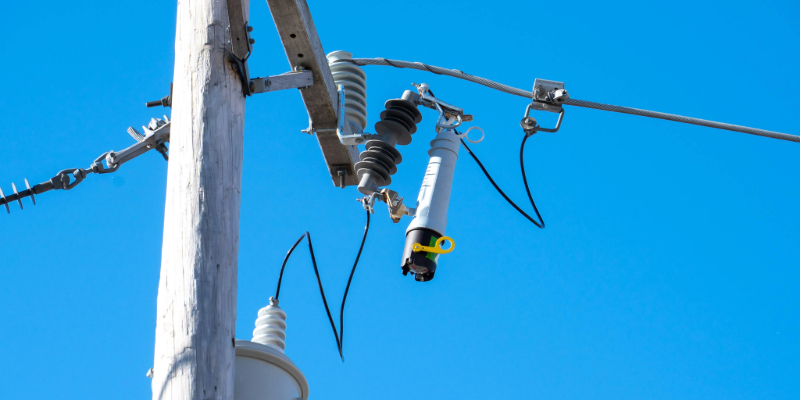Is It Time to Upgrade Your Grid Edge?
Back to Top
Summer heat is stress-testing the grid.
The temperatures are not just uncomfortable — they're operationally disruptive for the grid.
Summertime means:
- Higher temperatures and load volatility
- Stronger storms
- More lightning
Summer stresses grid assets, increasing outage risk. While utilities are keeping up to resolve outages when they occur, many residential consumers are still living on the edge—the grid edge, that is.
Why Your Residential Customers Might Face More Risk
Most residential customers are served by transformers on overhead radial lateral lines. These transformers are protected by fuses.
Overhead distribution transformer fuses are increasingly vulnerable—not just from age, but from repeated exposure to vibration and overcurrent stress due to:
- Lightning
- Load cycling
- Electrical transients
- Arrester operations
Over time, these stresses can cause “sneakouts”: unexpected shifts in fuse time-current characteristics (TCC) that disrupt coordination without warning. The result: more nuisance outages.
Why Fusing Challenges Are Costing You
Every time a transformer fuse operates, it creates a sustained outage that requires a truck roll. But here’s the key:
Industry data reveals that up to 70% of these outages and truck rolls are due to nuisance fuse operations that only require a fuse replacement. These are due to sneakouts or other transient reasons, rather than the fuse operating due to a permanent fault.
These refuse-only events are a significant contributor to operations and maintenance expenses. Plus, refusing errors can cause nuisance trips or operational hazards.
Compounding the issue is that these fuse operations often cluster, repeatedly affecting the same customers—especially those in rural or hard-to-reach areas.
But what if you could reduce the number of nuisance outages? Or when outages occur, be able to resolve them more quickly and in a safer way?

5 Reasons to Consider the Alternative to Transformer Fuses
It's time to look at an alternative, especially for the grid edge.
The VacuFuse® II Self-Resetting Interrupter is a smart, electronic successor to the transformer fuse. It’s a single-phase, resettable, transformer fuse-replacement device that uses a vacuum interrupter to interrupt faults instead of melting metal in a fuse.
The VacuFuse II interrupter can help you:
1. Reduce unexpected outages
- Electronic controls do not get impacted by overcurrent stress and TCC curve shifts over time as with fuses.
- No fuse links to replace or settings to program.
- Reduces nuisance tripping.
2. Improve coordination
- Allows for easy integration and coordination with upstream devices.
- Compatibility with familiar or transformer-specific TCC curves.
- Avoids refusing errors.
3. Simplify crew training and operations
- Installs easily into a cutout.
- Requires only a hot stick for operation or servicing.
- Has dropout operation providing a visible gap for faults.
- Has semaphore to indicate vacuum interrupter position.
4. Enhance safety
- No loud bang on operation.
- Extinguishes arc within the device, avoiding expulsion and debris.
- Once closed back into service by workers, the device has a time-delay before the vacuum interrupter closes. LED and vacuum interrupter position indicators let crews know device status.
5. Boost benefits with the fault-testing model
- Includes capabilities to test for temporary faults.
- Restores power and resets automatically if the line is clear.
- Reduces sustained outages and truck rolls.
- Improves reliability, O&M savings, and storm recovery.
Why Wait to Make the Swap?
Fuses still serve us well, but a changing grid is challenging fusing alone.
Making the move to an advanced protective device that’s less prone to damage and TCC shifts can yield substantial time and efficiency gains. Plus, you can reduce O&M expenses and burdens on crews during summer peak loading.
Consider evaluating how VacuFuse II interrupters can replace transformer fuses to strengthen your grid.
Discover the difference
Learn how the VacuFuse II Self-Resetting Interrupter compares to transformer fuses—contact S&C today.